BMW X7 vs Volvo XC90 – Which one offers the better deal?
Compare performance, boot capacity, efficiency and price at a glance.
Find out which car is the better choice for you – BMW X7 or Volvo XC90?
Costs and Efficiency:
Looking at overall running costs, both models reveal some interesting differences in everyday economy.
Volvo XC90 has a distinct advantage in terms of price – it starts at 69800 £, while the BMW X7 costs 90800 £. That’s a price difference of around 21009 £.
Fuel consumption also shows a difference: Volvo XC90 manages with 3.50 L and is therefore decisively more efficient than the BMW X7 with 8 L. The difference is about 4.50 L per 100 km.
Engine and Performance:
Under the bonnet, it becomes clear which model is tuned for sportiness and which one takes the lead when you hit the accelerator.
When it comes to engine power, the BMW X7 has a slightly edge – offering 530 HP compared to 455 HP. That’s roughly 75 HP more horsepower.
In acceleration from 0 to 100 km/h, the BMW X7 is slightly quicker – completing the sprint in 4.70 s, while the Volvo XC90 takes 5.40 s. That’s about 0.70 s faster.
In terms of top speed, the BMW X7 performs noticeable better – reaching 250 km/h, while the Volvo XC90 tops out at 180 km/h. The difference is around 70 km/h.
There’s also a difference in torque: BMW X7 pulls barely noticeable stronger with 750 Nm compared to 709 Nm. That’s about 41 Nm difference.
Space and Everyday Use:
Whether family car or daily driver – which one offers more room, flexibility and comfort?
Both vehicles offer seating for 7 people.
In curb weight, Volvo XC90 is a bit lighter – 2080 kg compared to 2490 kg. The difference is around 410 kg.
In terms of boot space, the BMW X7 offers convincingly more room – 750 L compared to 302 L. That’s a difference of about 448 L.
In maximum load capacity, the BMW X7 performs somewhat better – up to 2120 L, which is about 264 L more than the Volvo XC90.
When it comes to payload, BMW X7 barely noticeable takes the win – 760 kg compared to 710 kg. That’s a difference of about 50 kg.
Who comes out on top?
Overall, the Volvo XC90 shows itself to be wins the duel decisively and secures the title of DriveDuel Champion.
It convinces with the more balanced overall package and proves to be the more versatile choice for everyday use.

Volvo XC90
BMW X7
The BMW X7 stands as a remarkable testament to luxury and performance within the SUV market. Its design seamlessly blends elegance with a robust presence, ensuring a commanding stance on the road. Inside, it offers a lavish interior adorned with premium materials and cutting-edge technology to enhance the driving experience.
details @ press.bmwgroup.com
@ press.bmwgroup.com
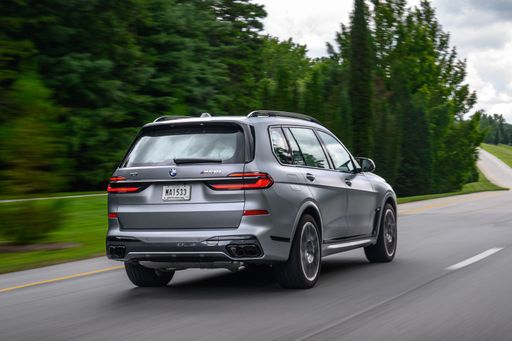 @ press.bmwgroup.com
@ press.bmwgroup.com
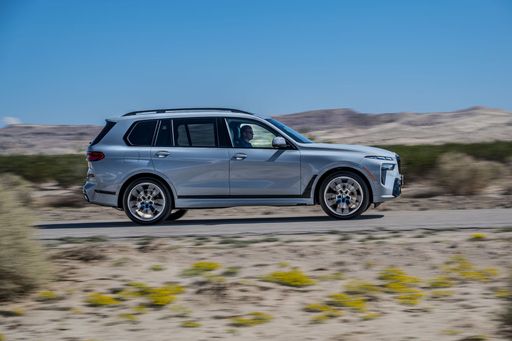 @ press.bmwgroup.com
@ press.bmwgroup.com
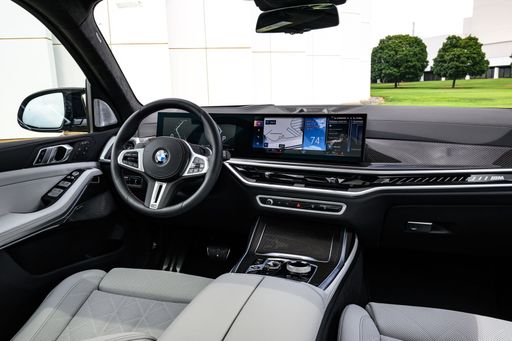 @ press.bmwgroup.com
@ press.bmwgroup.com
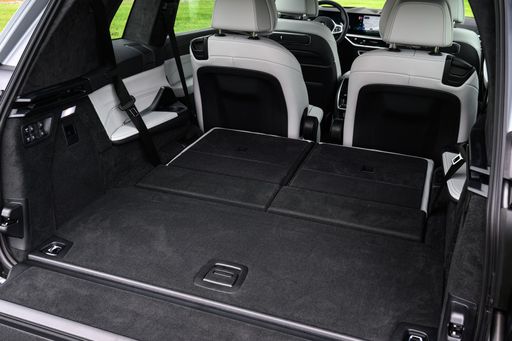 @ press.bmwgroup.com
@ press.bmwgroup.com
Volvo XC90
The Volvo XC90 stands out with its elegant Scandinavian design, seamlessly blending luxury with versatility. Inside, it offers a spacious and meticulously crafted interior, showcasing high-quality materials and advanced technology. The vehicle provides a comfortable and smooth driving experience, making it a popular choice for families and long journeys.
details @ media.volvocars.com
@ media.volvocars.com
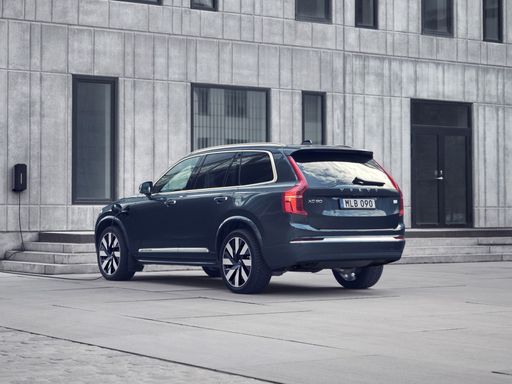 @ media.volvocars.com
@ media.volvocars.com
 @ media.volvocars.com
@ media.volvocars.com
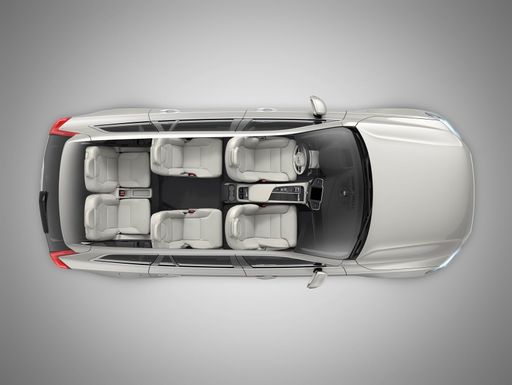 @ media.volvocars.com
@ media.volvocars.com
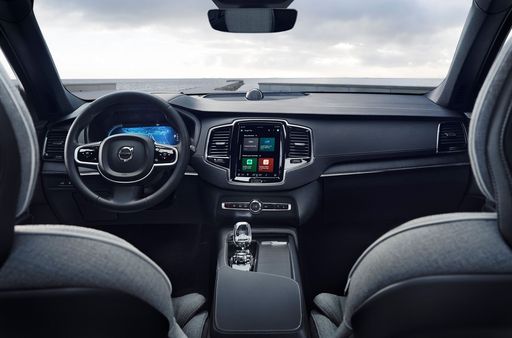 @ media.volvocars.com
@ media.volvocars.com

|

|
|
|
|
Costs and Consumption |
|
|---|---|
|
Price
90800 - 117500 £
|
Price
69800 - 84600 £
|
|
Consumption L/100km
8 - 12.1 L
|
Consumption L/100km
3.5 - 8.5 L
|
|
Consumption kWh/100km
-
|
Consumption kWh/100km
-
|
|
Electric Range
-
|
Electric Range
71 km
|
|
Battery Capacity
-
|
Battery Capacity
14.70 kWh
|
|
co2
210 - 274 g/km
|
co2
79 - 191 g/km
|
|
Fuel tank capacity
80 - 83 L
|
Fuel tank capacity
71 L
|
Dimensions and Body |
|
|---|---|
|
Body Type
SUV
|
Body Type
SUV
|
|
Seats
7
|
Seats
7
|
|
Doors
5
|
Doors
5
|
|
Curb weight
2490 - 2675 kg
|
Curb weight
2080 - 2297 kg
|
|
Trunk capacity
750 L
|
Trunk capacity
262 - 302 L
|
|
Length
5181 mm
|
Length
4953 mm
|
|
Width
2000 mm
|
Width
1923 mm
|
|
Height
1835 mm
|
Height
1771 mm
|
|
Max trunk capacity
2120 L
|
Max trunk capacity
1816 - 1856 L
|
|
Payload
680 - 760 kg
|
Payload
653 - 710 kg
|
Engine and Performance |
|
|---|---|
|
Engine Type
Diesel MHEV, Petrol MHEV
|
Engine Type
Petrol MHEV, Plugin Hybrid
|
|
Transmission
Automatic
|
Transmission
Automatic
|
|
Transmission Detail
Automatic Gearbox
|
Transmission Detail
Automatic Gearbox
|
|
Drive Type
All-Wheel Drive
|
Drive Type
All-Wheel Drive
|
|
Power HP
352 - 530 HP
|
Power HP
250 - 455 HP
|
|
Acceleration 0-100km/h
4.7 - 5.9 s
|
Acceleration 0-100km/h
5.4 - 7.7 s
|
|
Max Speed
245 - 250 km/h
|
Max Speed
180 km/h
|
|
Torque
520 - 750 Nm
|
Torque
360 - 709 Nm
|
|
Number of Cylinders
6 - 8
|
Number of Cylinders
4
|
|
Power kW
259 - 390 kW
|
Power kW
184 - 335 kW
|
|
Engine capacity
2993 - 4395 cm3
|
Engine capacity
1969 cm3
|
General |
|
|---|---|
|
Model Year
2023
|
Model Year
2024 - 2025
|
|
CO2 Efficiency Class
G
|
CO2 Efficiency Class
G, B
|
|
Brand
BMW
|
Brand
Volvo
|
What drivetrain options does the BMW X7 have?
The BMW X7 is available as All-Wheel Drive.
The prices and data displayed are estimates based on German list prices and may vary by country. This information is not legally binding.
